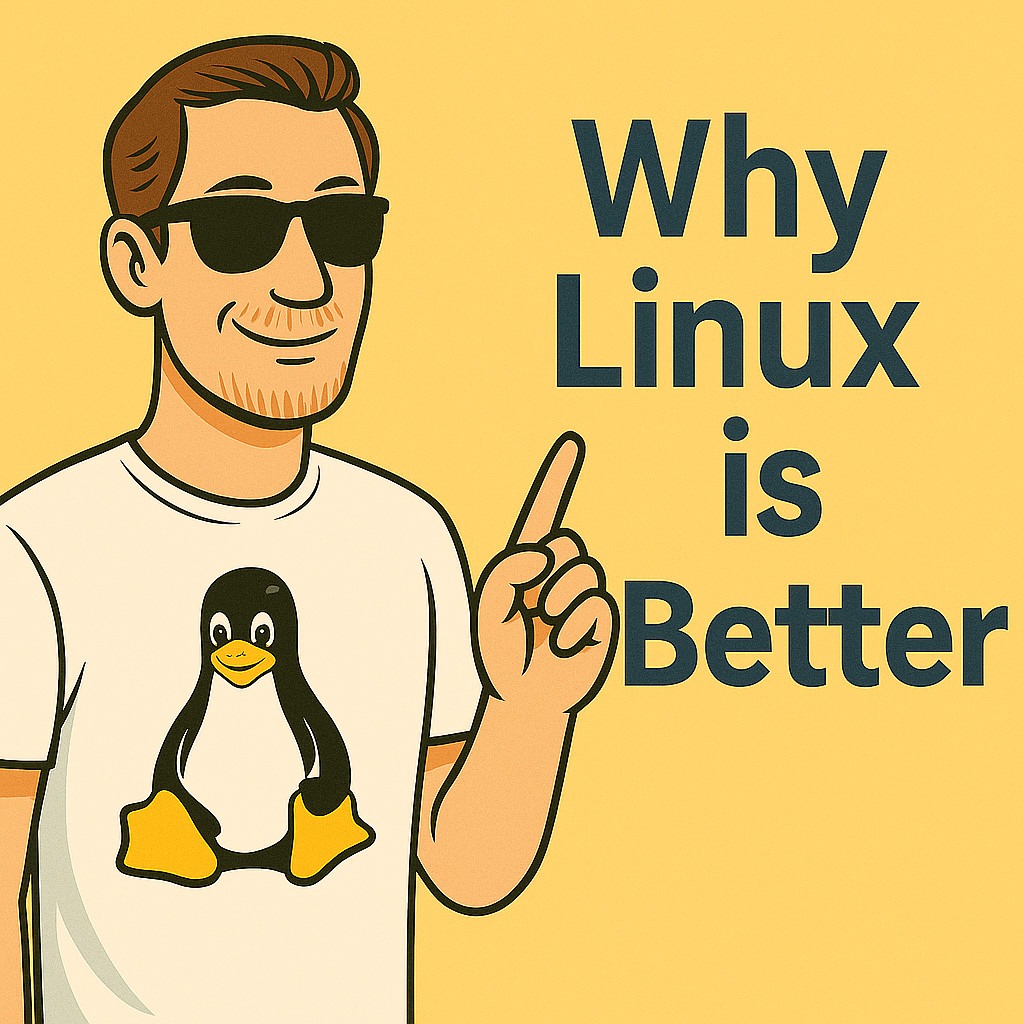Let’s get one thing out of the way: I swore I’d never write one of those posts. You know the type — “10 reasons Linux is better than Windows!”, “Escape the walled garden!”, “Install Arch btw!” We’ve all seen a thousand of them. Some are great. Most… meh. But here I am — writing one anyway.
Why? Because I realized that even my closest friends, family, and colleagues don’t actually know what Linux is. They hear me talk about “free software” and “open source” and nod politely — but let’s be honest, it’s all a blur to most. So this post isn’t for the neckbeards. It’s for the humans.
🥦 So… What Even Is Linux?
Linux is a free and open-source operating system. It’s kind of like Windows or macOS, but without the corporate strings attached. It’s the software that runs your computer — or in many cases, your phone, router, smart fridge, TV, or webcam. Yep. Linux is everywhere, even if you don’t realize it.
But unlike Windows or macOS, Linux is open. That means anyone — yes, literally anyone — can look at the code, copy it, improve it, or share it. You’re not just using the software — you can be part of it, if you want to.
💡 The Four Freedoms of Free Software
Here’s the really important bit. According to Richard Stallman — the guy who basically invented the concept of “Free Software” — a program is only truly free if it respects these four freedoms. I actually had the great fortune of seeing him live during a talk at the university in Karlsruhe, and got to hear him explain these ideas in person. It left a lasting impression.
- The freedom to run the program for any purpose.
- The freedom to study how it works and change it to suit your needs. (Access to source code is a must.)
- The freedom to redistribute copies so you can help others.
- The freedom to improve the program and release your improvements to the public.
That’s what we mean when we talk about free software. It’s not just about price — it’s about freedom.
🆓 Yes, You Can Download Linux for Free
Oh, and yes — Linux really is free to download and install. You can grab it right now, from the internet, without paying a cent. There are countless versions (called “distributions” or “distros”), and many are designed to be beginner-friendly — just click, install, and go.
Linux has been around since 1991 — which makes it over 30 years old. And it’s not the product of a single company. It’s built and maintained by a massive global community: tens of thousands of developers, hobbyists, volunteers, academics, and engineers from all over the world. Some work at big tech companies, others do it just because they believe in it.
This global collaboration is what makes Linux so unique — and so powerful.

